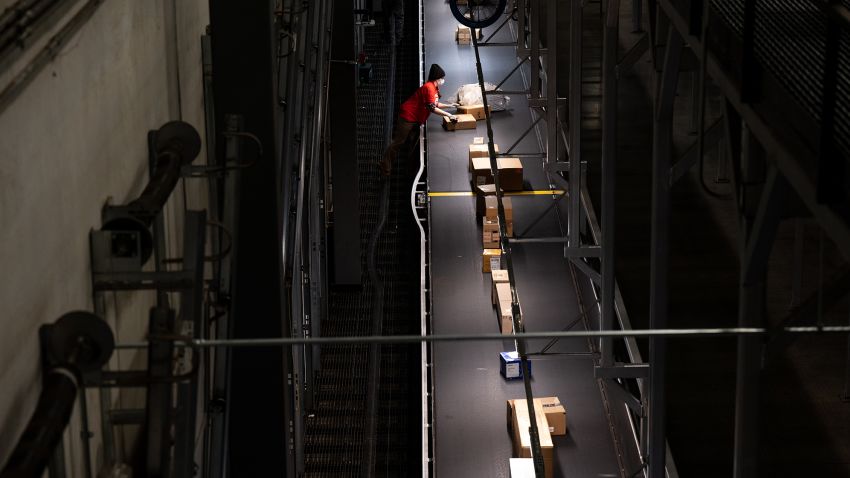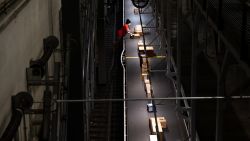2021 was a historically great year for jobs. So why didn’t it feel that way?
The short answers: Economists were befuddled. You were paying closer-than-usual attention. And months after a series of bad headlines subsided, the job situation quietly improved.
Confused? Don’t worry. Pretty much everyone is. We’ll take you through it.
The big picture
The US labor market has had a whirlwind of a year in 2021. Seemingly every month of jobs gains missed economists’ forecasts. And record numbers of available jobs and workers quitting made it even harder to track what was really going on. In some months, it even felt like the recovery wasn’t in the right direction at all.
But looking at 2021 in the rear-view mirror, it turns out it was actually a record-breaking year. The US economy added jobs every single month, not bad for what felt like a sluggish year.
“Obviously the expectations were much higher, but when you look at 2021 as a whole, the President’s economic plan is working,” Labor Secretary Marty Walsh told CNN Friday.
America added 6.4 million jobs in 2021, the most since records began in 1939.
The unemployment rate dropped to 3.9% at year-end compared with 6.7% in December 2020, a new pandemic-era low.
And Americans came back to the workforce in droves: The labor force participation rate climbed to 61.9% in November and stayed flat in the final month of the year, also marking a new pandemic high. That’s a number economists pay close attention to, because it indicates whether people are actively looking for work or so disillusioned that they stop looking altogether.
Women, who had dropped out of the workforce at alarming rates in 2020, partly due to child care challenges, also returned in 2021. The participation rate of women aged 20 and over rose back to 57.8%, also a pandemic-era high.
And businesses’ frantic search for staff meant workers were getting sign-on bonuses and bigger paychecks, particularly at the lower end of the income spectrum.
Of forecasts and getting it wrong
Month to month, however, 2021 didn’t feel so great. That’s because economists consistently set high expectations for the jobs report, only to be let down by a much lower-than-expected number.
So last year was a bit of a letdown, if only because expectations were so high.
How could economists get it so wrong all the time in the process? The bottom line is that the pandemic made their jobs a lot harder.
Forecasting is tricky in normal times, but Covid threw a wrench into things: The nation went from a historic job loss to getting millions of people back to work. And as demand soared, businesses kept needing more staff than they could find, sparking the labor shortage that defined much of 2021.
“A lot of [economists’] models are still informed by labor demand and have a hard time capturing that there are jobs out there but there aren’t enough workers,” said Sarah House, economist at Wells Fargo, about the difficulty to forecast the monthly job gains.
Economists aren’t bad at their jobs; they just have some unusual factors clouding their crystal balls.
For example, the employer survey that’s part of the jobs report has repeatedly underestimated job growth last year, which is visible in the sometimes sizable revisions that were made a month later.
“Seasonal adjustment challenges and a relatively low survey response rate argue for another round of upward revisions in future reports,” said economists at Goldman Sachs (GS) of the December report that came out Friday.
Amid the difficulty of the forecasting business, it also didn’t help that the jobs report became a point of focus outside the economic community during the pandemic: We were paying closer-than-usual attention, so that exacerbated those bad feelings.
Not done yet
But here’s the thing: Wall Street economists weren’t the only ones who were confused. Government economists who extrapolate data for the monthly jobs report were thrown for a loop, too.
In just about every month of 2021, the previous month and the month before that were revised higher. For example, on Friday the Labor Department reported that November’s jobs report was actually about 19% better than previously reported – gaining an additional 102,000 jobs for that month.
December’s worst-of-the-year report could get revised higher, too.
Still, it’s not all great news. The recovery is still not complete — even though 2021 was a great year for jobs,
At year-end, the nation was still down 3.6 million jobs compared to February 2020. And that doesn’t account for the jobs that would have been added over the past two years if it hadn’t been for Covid.
The participation rate is still 1.5 percentage points below the pre-pandemic level. Similarly, participation for women is still 1.5 percentage points below the pre-Covid level, putting it on par with a rate last seen in 1991.
There’s plenty of work left to be done in the new year. The highly infectious Omicron variant could make for rocky start to that.




















